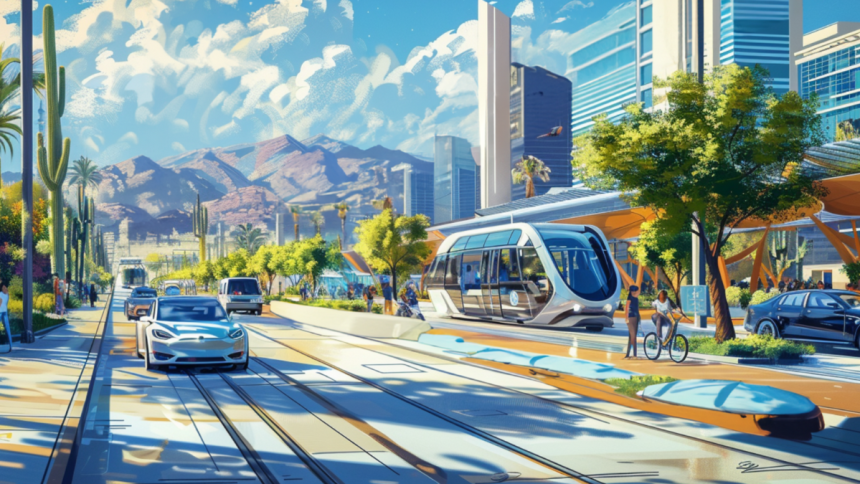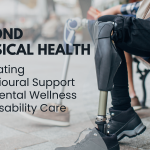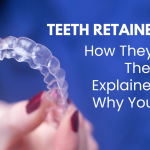What happens when a state known for freeways and sprawl starts investing in sidewalks, shaded streets, and public transit instead of more lanes? Arizona is undergoing a quiet but meaningful transformation in how people move through its cities and suburbs.
Long shaped by car culture and wide-open development, the state is now confronting rising traffic deaths, air quality concerns, and changing public expectations. In response, urban planners and local governments are rethinking mobility from the ground up, designing communities that prioritize walking, safety, and sustainability over speed and convenience.
The Turning Point: Why Arizona Needed a Mobility Shift
Arizona’s long-standing reliance on wide freeways and suburban sprawl made it one of the most car-dependent states in the country. For decades, city planning favored rapid development and easy vehicle access, often at the expense of pedestrian safety and transit options.
But as urban populations have grown and road networks have aged, the cracks in this model have become more visible, both literally and figuratively. Traffic congestion, pedestrian fatalities, and air quality issues have all highlighted the need for more balanced mobility planning.
Recent data revealed a troubling rise in traffic-related deaths, especially involving pedestrians and cyclists. These incidents underscored a systemic problem in street design and prioritization. At the same time, residents began to demand more walkable neighborhoods, safer school zones, and better public transit.
Shifting preferences among younger generations and retirees alike have pushed cities to reconsider what mobility should look like—not just as a means of getting around, but as a foundation for livability, health, and sustainability.
Safer Streets and Smarter Design
Arizona cities have begun to redesign their streets with safety as a core priority. Traffic-calming features such as narrowed lanes, raised crosswalks, and protected bike lanes are being implemented in areas where collisions are most common.
Updated crosswalks, better lighting, and clearer signage aim to reduce confusion and improve visibility for both drivers and pedestrians. These changes may seem small individually, but together they mark a shift toward environments that support slower, more intentional movement.
In addition to physical infrastructure, public safety campaigns are targeting driver behavior and awareness. Initiatives educate the public on right-of-way laws, the importance of yielding to pedestrians, and the consequences of distracted driving.
Speed limits are being reduced in high-risk zones, and enforcement is being paired with community outreach to ensure long-term change. In case of injury in crosswalks or on poorly marked roads, speaking with a pedestrian accident lawyer from Phoenix can help clarify legal options and rights. Altogether, this approach reflects an understanding that safer streets require both smarter design and a cultural shift in how roads are shared.
Culdesac Tempe: A Car-Free Experiment in the Desert
One of the most talked-about urban planning experiments in Arizona is the development of entire neighborhoods designed without personal car ownership in mind. These communities prioritize walkability and shared mobility over private vehicles, creating an environment where residents can live, work, and socialize without needing to drive. While this model is still rare, its emergence in Arizona reflects a growing willingness to rethink land use and transportation from the ground up.
Such neighborhoods are built with shaded pedestrian paths, small local shops, green courtyards, and transit hubs within walking distance. Residents are encouraged to use bikes, scooters, public transport, and rideshare instead of personal vehicles.
This layout reduces noise, heat from asphalt, and parking infrastructure, making space for community-driven design. Though not suited for every part of the state, these projects show what’s possible when mobility is planned for people rather than cars.
Transit in Transition: Public Transport Gets a Boost
Arizona’s public transportation system is evolving to meet the needs of a broader population. Light rail expansion, bus route improvements, and new streetcar lines are making it easier for residents to commute without a car.
These upgrades focus on connecting densely populated areas, educational institutions, and key job centers, offering more predictable and efficient options than in the past. While still limited in reach compared to larger metro systems, these networks represent a meaningful step forward.
Increased investment in local transit is also helping reduce congestion and lower emissions. By making public transportation more accessible and reliable, Arizona cities are aiming to reduce the number of single-occupancy vehicles on the road.
This is especially important in areas where parking is limited or traffic delays are frequent. The improvements are not just about convenience—they’re about expanding opportunity and mobility for those who may not drive due to cost, age, or ability.
Green Infrastructure and Tech Integration
Arizona’s efforts to modernize its transportation network also include a strong push toward sustainability. Cities are incorporating heat-reflective materials, increasing tree coverage, and investing in shaded sidewalks to combat urban heat.
Green building standards are being used to guide construction of new facilities, encouraging energy efficiency and water conservation. These strategies are critical in a desert environment where extreme temperatures and drought are constant concerns.
Emerging technologies are also being tested to meet evolving needs. From autonomous shuttles in senior communities to smart sensors for traffic monitoring, innovation is playing a role in how transportation adapts.
At the state level, planning now includes environmental reviews that account for wildlife movement, air quality, and water impact. The integration of sustainability into infrastructure planning ensures that growth doesn’t come at the expense of future resilience.
Challenges and What’s Next
Despite progress, Arizona still faces real challenges. Many areas remain heavily car-dependent, with wide roads and long distances between destinations. Heat remains a barrier to walkability, especially in summer months, making shaded infrastructure and cooling strategies essential. Additionally, retrofitting existing neighborhoods and infrastructure takes time, funding, and coordination across agencies and communities.
Looking ahead, more developments are expected to follow the pedestrian-first model, and existing neighborhoods may adopt gradual improvements to increase connectivity and safety. Ongoing investments in transit, bike infrastructure, and climate-friendly design will play a key role. While not every city in Arizona is moving at the same pace, the broader trend is clear: the future of mobility in Arizona is being built around people, not just vehicles.
Conclusion
What does it say about a place when walking becomes safer, easier, and more appealing than driving? Arizona’s shift from wide highways to people-focused streets signals more than just a change in transportation, it reflects a broader rethinking of how cities function in a hotter, more crowded, and more sustainability-conscious future.
With targeted safety initiatives, smarter urban design, and growing investment in green infrastructure, the state is building mobility systems that serve both current residents and future generations. While challenges remain, the direction is clear: Arizona is redefining movement as a matter of livability, equity, and resilience.
Lynn Martelli is an editor at Readability. She received her MFA in Creative Writing from Antioch University and has worked as an editor for over 10 years. Lynn has edited a wide variety of books, including fiction, non-fiction, memoirs, and more. In her free time, Lynn enjoys reading, writing, and spending time with her family and friends.















